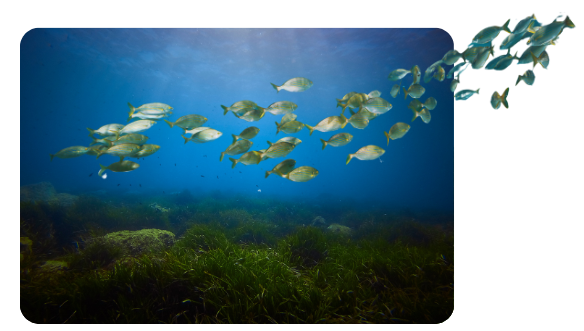Project
Biodiversity in the Open Ocean: Mapping, Monitoring and Modelling (BOOMS)

Project Start: February 2022 | Project End: February 2024
Project Funder: The European Space Agency
Principal Investigator: Dr Victor Martinez-Vicente
Other Participants: Dr. Shubha Sathyendranath, Dr. Peter Miller, Dr Tom Jackson, Dr Angus Atkinson, Kim Hockley
Project Website: https://booms-project.org
Increasing pressure due to anthropogenic drivers is leading to a reduction of global biodiversity and its associated benefits at the planetary scale. In open ocean (seafloor depth greater than 200 m) the most important direct drivers of biodiversity loss is fishing and extraction of seafood, with a lesser but rapidly increasing importance of climate change, pollution and invasive species. These drivers have accelerated in the last 50 years and they are predicted to continue, despite international efforts in the last decades. To guide further action, it is, therefore, urgent and important to develop “fit-for-purpose” observation tools. These observations should be capable of assessing and monitoring how the community structure and function of coastal ecosystems respond to the anthropogenic and natural drivers in a changing climate.
The BOOMS project aims to provide the best possible characterisation of oceanic seascapes (habitats defined by physical, chemical or biological characteristics), and its relationship to Essential Biodiversity Variables (EBV) globally. It will produce a >10-year time series of seascapes based on 4-km resolution remote sensing data over the global ocean, combining independent datasets from advanced algorithms of ocean colour and sea surface temperature. BOOMS will focus on three Science Case Studies, for different trophic levels: phytoplankton, zooplankton and fish.
In particular, this project main objectives are:
- Identify and characterise critical applications (Science Case Studies) of remote sensing to study open ocean biodiversity, with a focus on dynamic seascapes.
- Develop a global dataset and evaluate its application for each Science Case Study.
- Engage with the community of biodiversity stakeholders (scientific and Early Adopters) and the remote sensing community throughout the project.
- Define the activities necessary to utilise current and planned sensors to detect measures of marine biodiversity; or define new approaches, if the existing ones are not considered capable to fulfil the targeted science objectives.
